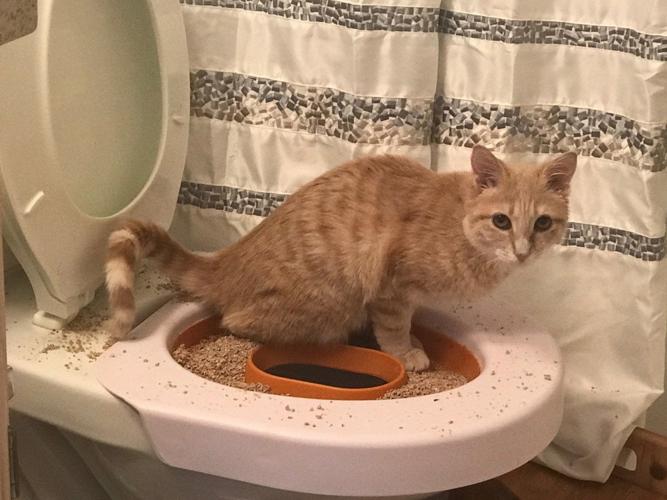Dangers of Flushing Cat Poop Down Your Toilet - Avoid Potential Issues
Dangers of Flushing Cat Poop Down Your Toilet - Avoid Potential Issues
Blog Article
What're your opinions about Can You Flush Cat Poop Down The Toilet??

Intro
As cat proprietors, it's important to be mindful of just how we take care of our feline good friends' waste. While it may seem practical to purge cat poop down the bathroom, this technique can have destructive consequences for both the environment and human wellness.
Alternatives to Flushing
Thankfully, there are much safer and more liable methods to take care of pet cat poop. Consider the complying with options:
1. Scoop and Dispose in Trash
One of the most typical approach of disposing of pet cat poop is to scoop it right into a biodegradable bag and toss it in the trash. Make certain to utilize a devoted trash scoop and take care of the waste without delay.
2. Use Biodegradable Litter
Go with eco-friendly cat clutter made from materials such as corn or wheat. These clutters are environmentally friendly and can be securely gotten rid of in the garbage.
3. Hide in the Yard
If you have a lawn, think about hiding feline waste in a designated area far from veggie gardens and water sources. Make sure to dig deep enough to avoid contamination of groundwater.
4. Mount a Pet Waste Disposal System
Purchase a pet garbage disposal system particularly made for pet cat waste. These systems use enzymes to break down the waste, decreasing smell and environmental effect.
Health and wellness Risks
In addition to ecological concerns, flushing feline waste can likewise present health and wellness risks to humans. Feline feces might have Toxoplasma gondii, a bloodsucker that can trigger toxoplasmosis-- a potentially extreme health problem, especially for pregnant women and individuals with damaged immune systems.
Ecological Impact
Purging cat poop presents harmful pathogens and parasites into the water system, posing a substantial threat to marine ecosystems. These impurities can negatively affect marine life and concession water quality.
Conclusion
Liable animal ownership prolongs beyond providing food and sanctuary-- it additionally entails correct waste monitoring. By avoiding purging cat poop down the bathroom and selecting alternative disposal techniques, we can lessen our environmental impact and safeguard human health and wellness.
Why Can’t I Flush Cat Poop?
It Spreads a Parasite
Cats are frequently infected with a parasite called toxoplasma gondii. The parasite causes an infection called toxoplasmosis. It is usually harmless to cats. The parasite only uses cat poop as a host for its eggs. Otherwise, the cat’s immune system usually keeps the infection at low enough levels to maintain its own health. But it does not stop the develop of eggs. These eggs are tiny and surprisingly tough. They may survive for a year before they begin to grow. But that’s the problem.
Our wastewater system is not designed to deal with toxoplasmosis eggs. Instead, most eggs will flush from your toilet into sewers and wastewater management plants. After the sewage is treated for many other harmful things in it, it is typically released into local rivers, lakes, or oceans. Here, the toxoplasmosis eggs can find new hosts, including starfish, crabs, otters, and many other wildlife. For many, this is a significant risk to their health. Toxoplasmosis can also end up infecting water sources that are important for agriculture, which means our deer, pigs, and sheep can get infected too.
Is There Risk to Humans?
There can be a risk to human life from flushing cat poop down the toilet. If you do so, the parasites from your cat’s poop can end up in shellfish, game animals, or livestock. If this meat is then served raw or undercooked, the people who eat it can get sick.
In fact, according to the CDC, 40 million people in the United States are infected with toxoplasma gondii. They get it from exposure to infected seafood, or from some kind of cat poop contamination, like drinking from a stream that is contaminated or touching anything that has come into contact with cat poop. That includes just cleaning a cat litter box.
Most people who get infected with these parasites will not develop any symptoms. However, for pregnant women or for those with compromised immune systems, the parasite can cause severe health problems.
How to Handle Cat Poop
The best way to handle cat poop is actually to clean the box more often. The eggs that the parasite sheds will not become active until one to five days after the cat poops. That means that if you clean daily, you’re much less likely to come into direct contact with infectious eggs.
That said, always dispose of cat poop in the garbage and not down the toilet. Wash your hands before and after you clean the litter box, and bring the bag of poop right outside to your garbage bins.
https://trenchlesssolutionsusa.com/why-cant-i-flush-cat-poop/
Do you like reading up on Don’t flush cat feces down the toilet? Try leaving a remark down the page. We would be glad to hear your insights about this write up. In hopes to see you back again before long. Are you aware of somebody else who is intrigued by the topic? Why not promote it. We treasure reading our article about How to Dispose of Cat Poop and Litter Without Plastic Bags.
Appointment Report this page